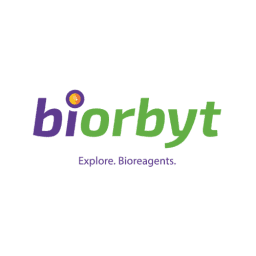HCN4 / ATTO 565 / S114-10
Product Details
| Description | Mouse monoclonal to HCN4 (ATTO 565). Ion channels are integral membrane proteins that help establish and control the small voltage gradient across the plasma membrane of living cells by allowing the flow of ions down their electrochemical gradient. They are present in the membranes that surround all biological cells because their main function is to regulate the flow of ions across this membrane. Whereas some ion channels permit the passage of ions based on charge, others conduct based on a ionic species, such as sodium or potassium. Furthermore, in some ion channels, the passage is governed by a gate which is controlled by chemical or electrical signals, temperature, or mechanical forces. There are a few main classifications of gated ion channels. There are voltage- gated ion channels, ligand- gated, other gating systems and finally those that are classified differently, having more exotic characteristics. The first are voltage- gated ion channels which open and close in response to membrane potential. These are then separated into sodium, calcium, potassium, proton, transient receptor, and cyclic nucleotide-gated channels; each of which is responsible for a unique role. Ligand-gated ion channels are also known as ionotropic receptors, and they open in response to specific ligand molecules binding to the extracellular domain of the receptor protein. The other gated classifications include activation and inactivation by second messengers, inward-rectifier potassium channels, calcium-activated potassium channels, two-pore-domain potassium channels, light-gated channels, mechano-sensitive ion channels and cyclic nucleotide-gated channels. Finally, the other classifications are based on less normal characteristics such as two-pore channels, and transient receptor potential channels. Specifically, hyperpolarization-activated cation channels of the HCN gene family contribute to spontaneous rhythmic activity in both the heart and brain. | |
|---|---|---|
| Conjugate | ATTO 565 | |
| Clone | S114-10 | |
| Target Species | Human, Rat | |
| Applications | IF, IHC-P, ICC, WB | |
| Supplier | Biorbyt | |
| Catalog # | Sign in to view product details, citations, and spectra | |
| Size | ||
| Price | ||
| Antigen | ||
| Host | ||
| Isotype |
About HCN4
This gene encodes a member of the hyperpolarization-activated cyclic nucleotide-gated potassium channels. The encoded protein shows slow kinetics of activation and inactivation, and is necessary for the cardiac pacemaking process. This channel may also mediate responses to sour stimuli. Mutations in this gene have been linked to sick sinus syndrome 2, also known as atrial fibrillation with bradyarrhythmia or familial sinus bradycardia. Two pseudogenes have been identified on chromosome 15. [provided by RefSeq, Oct 2008]
This gene encodes a member of the hyperpolarization-activated cyclic nucleotide-gated potassium channels. The encoded protein shows slow kinetics of activation and inactivation, and is necessary for the cardiac pacemaking process. This channel may also mediate responses to sour stimuli. Mutations in this gene have been linked to sick sinus syndrome 2, also known as atrial fibrillation with bradyarrhythmia or familial sinus bradycardia. Two pseudogenes have been identified on chromosome 15. [provided by RefSeq, Oct 2008]
About ATTO 565
ATTO 565 from ATTO-Tec Gmbh has an excitation peak at 563 nm and an emission peak at 592 nm.
ATTO 565 from ATTO-Tec Gmbh has an excitation peak at 563 nm and an emission peak at 592 nm.
Experiment Design Tools
Panel Builders
Looking to design a Microscopy or Flow Cytometry experiment?
Validation References
Reviews & Ratings
| Reviews |
|---|
Looking for more options?
166 HCN4 antibodies from over 18 suppliers available with over 38 conjugates.





